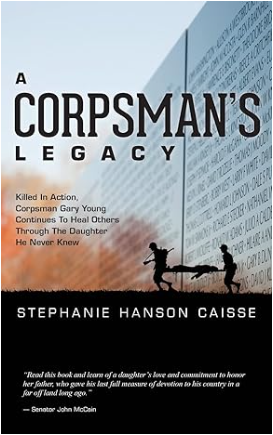Colonel William Richard Higgins was born on January 15, 1945, in Danville, Kentucky, and raised in Louisville, where he graduated from Southern High School. Driven by a deep sense of civic responsibility, he attended Miami University in Ohio on a Navy ROTC scholarship and commissioned into the United States Marine Corps upon graduation in May 1967.
Second Lieutenant Higgins was deployed to Vietnam later that year, where he served as a Rifle Platoon Commander with C Company, 1st Battalion, 3rd Marine Regiment from December 1967 to July 1968. In the crucible of jungle warfare, his cool leadership and unshakable resolve earned him the Bronze Star Medal with Combat “V” for valor. Those who fought alongside him spoke of a young officer who led from the front and steadied others when chaos surged.
Returning stateside, Higgins exemplified the Marine Corps ideal of the scholar-warrior. He earned master’s degrees from Pepperdine University in international relations and Auburn University in strategic studies. His intellect was matched only by his integrity, and his assignments throughout the 1970s and ’80s, including a tour as military assistant to the Secretary of Defense during the Reagan administration, reflected his rising stature in the Corps.

By the mid-1980s, Lieutenant Colonel Higgins was assigned as Chief of the Observer Group Lebanon and Senior Military Observer with the United Nations Truce Supervision Organization. Lebanon was a land torn by civil war and foreign occupation, where ceasefires were fragile and violence sudden. Yet Higgins took to the mission with the same unwavering dedication he brought to combat. He studied Arabic, engaged local factions with fairness, and authored field reports that diplomats and generals alike trusted for their clarity and balance.
On February 17, 1988, while traveling alone on a narrow coastal road between Tyre and Naqoura in southern Lebanon, Higgins was abducted by armed men, members of a group believed to be affiliated with Hezbollah. His captors accused him of espionage, held him in secret, and subjected him to psychological torment and physical mistreatment. After more than a year in captivity, a horrifying video emerged showing Higgins being hanged. Though the exact date of his death remains unknown, with sources citing dates ranging from 1989 to 1990, it is presumed he was killed shortly before the video’s release.
While in captivity, Higgins was posthumously promoted to colonel. Accounts from intelligence analysts and fellow Marines suggest he remained resilient, clinging to routine, maintaining dignity, and embodying the steadfast courage expected of a Marine officer. He never betrayed his oath.
His remains were recovered and returned home in December 1991. On December 30 of that year, he was laid to rest at Quantico National Cemetery, as hundreds of Marines and dignitaries paid their respects.
Colonel Higgins was posthumously awarded the Defense Distinguished Service Medal, Defense Superior Service Medal, Legion of Merit, Purple Heart, and the Presidential Citizens Medal, which was presented by President George H. W. Bush in 1992.
To honor his legacy, the U.S. Navy commissioned the USS Higgins (DDG-76) in 1999, an Arleigh Burke-class destroyer that now sails under his name, protecting peace and projecting strength across the seas.
Higgins’ story is not just one of heroism, but of principle. He reminds us that the Marine Corps is not merely about combat, it’s about character. His sacrifice speaks to the quiet valor required in the shadowy margins of peacekeeping, where risk and restraint are daily companions.
Colonel William R. Higgins gave his life in service to peace, embodying the Marine Corps’ highest ideals, courage, wisdom, duty. In the face of captivity and cruelty, he did not falter. His life stands as testament to what it means to remain faithful, Semper Fidelis, when the world goes dark.

 Our legacy lives through the stories we tell. The Suck Life wants yours! Make Chesty proud!
Our legacy lives through the stories we tell. The Suck Life wants yours! Make Chesty proud!



 Semper Fidelis
Semper Fidelis

